|
|
|
|
Our History
A Union is Born
The Turbulent Years
The Conspiracy Trials
The Beginning of the
Morrin Era
The Depression and a New
Deal For Labor
World War II
Ironworkers Grow in the
1950's Part Two Part Three
John H. Lyons Jr.
Elected President
The Tradition Continues
Pathways to the 21st
Century Under The Leadership of General President Jake West
|
Part Two
IRONWORKERS RIDE THE RAILS
Local Unions were scattered in those days, sometimes 800 miles apart. Most Business Agents worked on a job. A few of the members owned a model A or a T Ford, but usually could not afford gas, therefore, they used the "Oklahoma Courtesy Card," namely a siphon hose. This name was given to the siphon hose by the "Okies" who migrated to California following the great dust storms of the thirties. Most of the Ironworkers did their traveling by freight train which was very hazardous - they "Rode the Rails." Most or all structural steel was riveted at that time. A riveting gang usually traveled together. A gang was composed of four men. Others traveled in pairs. The usual procedure for seeking a job was to consult "the Bridgemen's Magazine" and pick a place to work. After deciding, they made their plans for an extended stay. They would carry their "suitcase" on their back. That is, they would wear all the clothes they owned. These consisted of a pair of khaki pants, white shirt worn under a blue denim shirt, blue overalls, and a blue denim jumper or coat. If they found a job, the khaki pants and white shirt would be their dress clothes, the rest their work clothes. The Ironworkers would walk to the nearest railroad. Most of the trains ran on steam, therefore the engines had to have water. So the Ironworkers would make their way to the water tank, being very careful to stay out of sight. Usually they hid in the weeds that grew beside the track. It seemed as if the lord provided for his own by placing those weeds beside all railroad tracks. The reason they were so careful to stay hidden was there were some thoroughly bad "Railroad Bulls," slang for Railroad Police. Some of these men enjoyed beating up a hobo. There was "Texas Slim", "Hardrock Hardin", "Frisco Kid", "Big Charlie". and a host of others just as tough. Besides the railroad police, Ironworkers had to dodge a host of sheriffs and town marshals. Most all states and town recruited the labor for their farms, roads and chain gangs off the railroads. If the men caught the train, and were luck enough to get inside an empty car, they would have some protection from the rain and cold. One thing a man had to watch when he was "riding the rails" was his company. Sometimes there were murderers, cutthroats, prostitutes, pickpockets and honest working men all in the same car. Upon reaching their destination, they learned the job was a short distance from town. They knew they would find a meal that night. All "Hobo Jungles" or "Camps" always had a pot of stew on the fire which was free to all. The ingredients were usually bummed. Usually the folks working on the job furnished the smoking tobacco. Even when getting to the job-site, the Ironworker boomer, in many instances, had to wait to go to work until someone got fired or fell. They would continue to camp on the river bank as long as their was hope of going to work. They used the river for a laundry, a campfire for a dryer. If it was cold they wrapped themselves in newspaper to sleep. if it rained, they would sleep under a bridge. If it snowed, they usually would seek asylum in the nearest jail. Once an Ironworker got a job, the pay was usually low and the accident list was high. Some of the larger companies did not allow smoking on their jobs. They would fire a man for smoking about as quick as they would for not working. The "New Deal" dams had their own camps, often called "slab towns." They got their name because they were made of slabs of lumber. Gamblers, bootleggers and prostitutes followed the large construction jobs. The young members of today should know about the tough times the Ironworkers had during the "Great Depression" when many of them had to "Ride the Rails."
NORRIS-LAGUARDIA ACT OF 1932 Until the signing of this Act, an employer experiencing a strike or picket line or demonstration against them on their property, had only to state his case to a Judge and the Courts would blindly issue an "Injunction" against labor. This Act greatly narrowed the courts ability to prohibit "peaceful picketing, peaceful assembly, organizational picketing, payment of strike benefits, and a host of other economic weapons that were almost illegal up until then." The Act also outlawed "yellow dog" contracts which required workers to swear they would not join a union before being hired. It was the second great piece of federal legislation for unions. It did not do much to demand that employers recognize the collective bargaining system, but it surely set the tone that it was now necessary for Congress, in the future, to guarantee "full freedom of association, self-organization, and designation of representatives of his or her own choosing, to negotiate the terms and conditions of his or her employment...free from interference, restraint or coercion by employers."
CONDITIONS GREW WORSE IN EARLY 1933
Among early measures FDR introduced was the National Industrial Recovery Act, generally called the NRA, which sought to stabilize industry under a system of fair wage and price codes. The object of the law was to halt the downward economic cycle which fed on wage and price cutting. Section 7(a) of the NR A gave workers the legal right to organize into unions of their own selection. While the section had no real legal teeth and employer resistance soon developed, Section 7(a) was instrumental in setting the stage for dramatic advances for working people.
FRANCES PERKINS, SECRETARY OF LABOR "Madame Perkins" as
she was known, was appointed on March 4, 1933 as Secretary of Labor.
This was the same day that Roosevelt took the oath of office. She
would be the first woman ever appointed to a Presidential What a Secretary of Labor she became!!! In early 1934 she would make her recommendations to Congress and the Bridgemen's Magazine printed them in February of that year. Among the things she suggested were an unemployment service, a mediation service, unemployment insurance, low cost housing, more concern for worker safety, old-age insurance, higher wages, an end to child labor and the right of workers to organize. Some of these things had been established as temporary measures. Secretary Perkins wanted them to be permanent. Labor Secretary Perkins was instrumental in the passage of the Wagner-Peyser Act which created the United States Employment Service in the department of Labor. In early 1934 she sent a letter of appreciation to General President Morrin and the readers of the Bridgemen's Magazine for the support given her. The General Executive Board of the International Association, because of the depression, took action to lower the Standard Initiation Fee and Reinstatement Fee from $100.00 to $25.00 effective July 1, 1933. General President Morrin stated that "due to unemployment a large number of members of our organization have permitted their cards to lapse, many through no fault of their own, as they were unable to secure work at our trade during the terrible dull period from which we are now emerging." This action was in effect until December 31, 1933. Ironworkers, especially President Morrin and General Counsel Frank P. Walsh, were leaders in New Deal efforts to get labor back on its feet again. On July 10, 1933, the Executive Board renewed the Bridge Erectors agreement and revised it to cover building and other forms of iron and steel erection. This revised agreement served as a model for a proposed "Code for the Structural Steel Fabrication and Erection Industries" under provisions made by the National Recovery Administration in 1933. The Code, if passed, would have unionized the steel industry at a critical time, but apparent pressure from non-union forces prevented formal action.
Scroll to the top and click on
The Depression and a New Deal For
Labor - 1930 to 1940 - Part Three
[Home]
[Officers]
[Upcoming
Events] [Links
to Other Unions] |
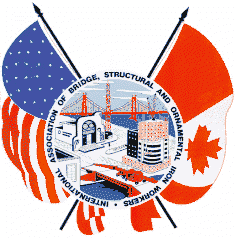
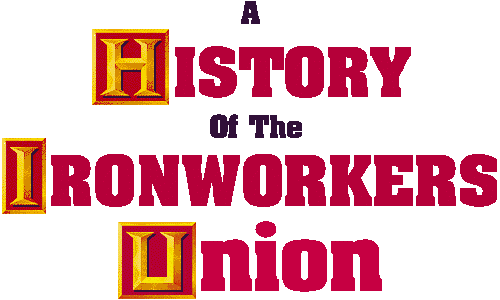
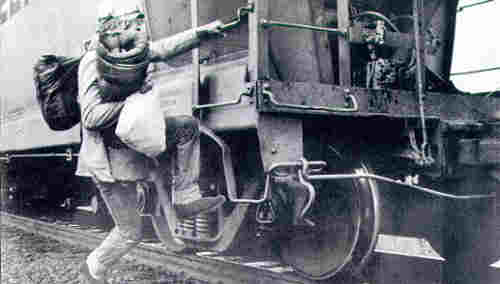
 n
1976, Brother R. E. "Dick" Gautney, Local No. 477, Sheffield,
Alabama wrote to the Editor of the Ironworker
Magazine (formerly the
Bridgemen's Magazine) about Ironworkers
during the "Great Depression" of the 1930's. During this
period, the magazine contained a complete list of all the jobs in the
United states. It gave the name of the erector, the total tons,
cost, and job location. He said "this information was a
lifesaver for a large segment of our membership in those days."
n
1976, Brother R. E. "Dick" Gautney, Local No. 477, Sheffield,
Alabama wrote to the Editor of the Ironworker
Magazine (formerly the
Bridgemen's Magazine) about Ironworkers
during the "Great Depression" of the 1930's. During this
period, the magazine contained a complete list of all the jobs in the
United states. It gave the name of the erector, the total tons,
cost, and job location. He said "this information was a
lifesaver for a large segment of our membership in those days."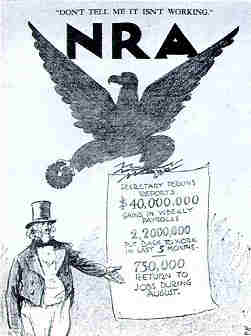 President
Franklin Delano Roosevelt would not take office until March 4, 1933.
During January and February, while Hoover was still President, the
situation got worse with over fifteen million workers unemployed and the
International membership dropped to 10, 318. When Roosevelt was
sworn into the Presidency, he immediately went into action. What
would follow were the famous "Hundred Days" (March 9 to June 6,
1933).
President
Franklin Delano Roosevelt would not take office until March 4, 1933.
During January and February, while Hoover was still President, the
situation got worse with over fifteen million workers unemployed and the
International membership dropped to 10, 318. When Roosevelt was
sworn into the Presidency, he immediately went into action. What
would follow were the famous "Hundred Days" (March 9 to June 6,
1933).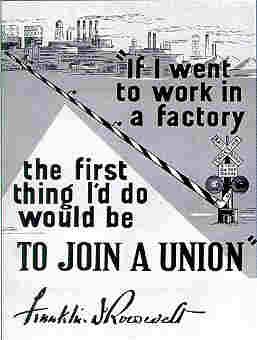 cabinet. Labor was at first concerned since she was not out of the
labor movement. She had been a social worker and later an industrial
commissioner of the State of New York.
cabinet. Labor was at first concerned since she was not out of the
labor movement. She had been a social worker and later an industrial
commissioner of the State of New York.